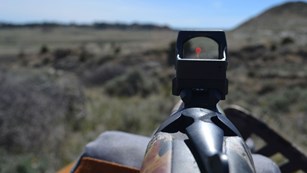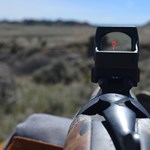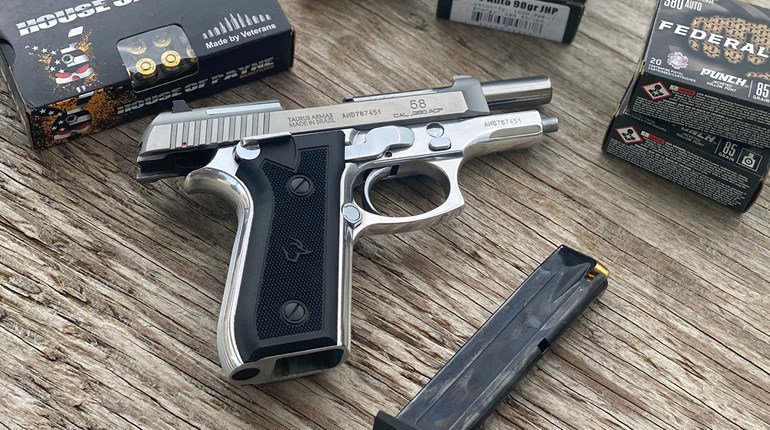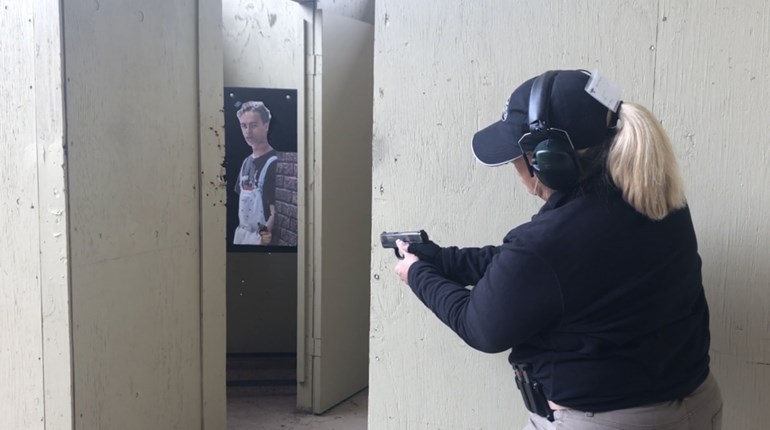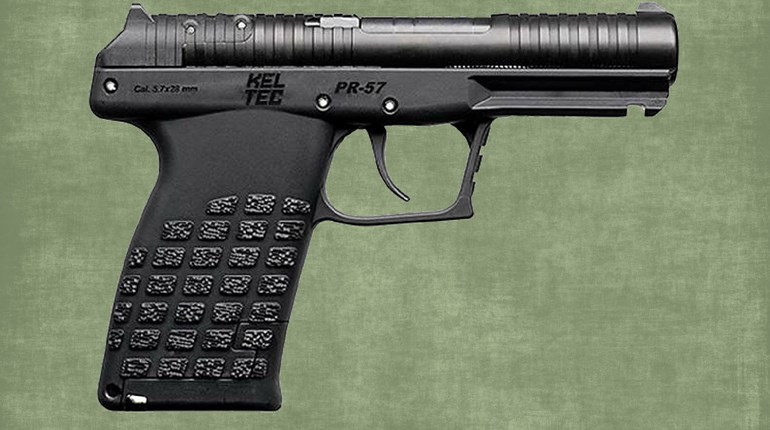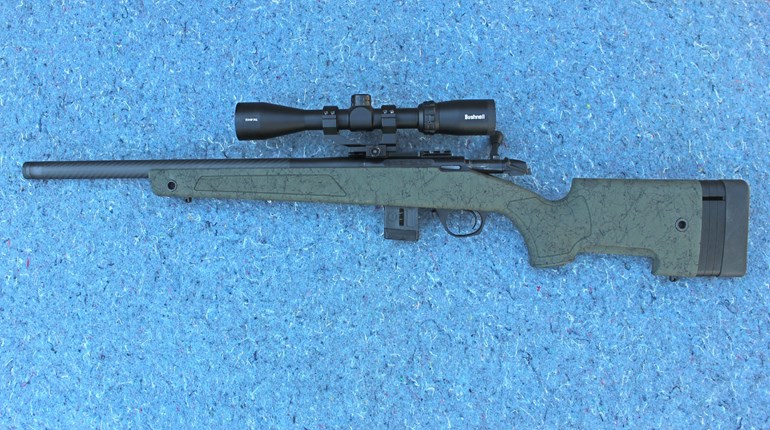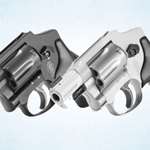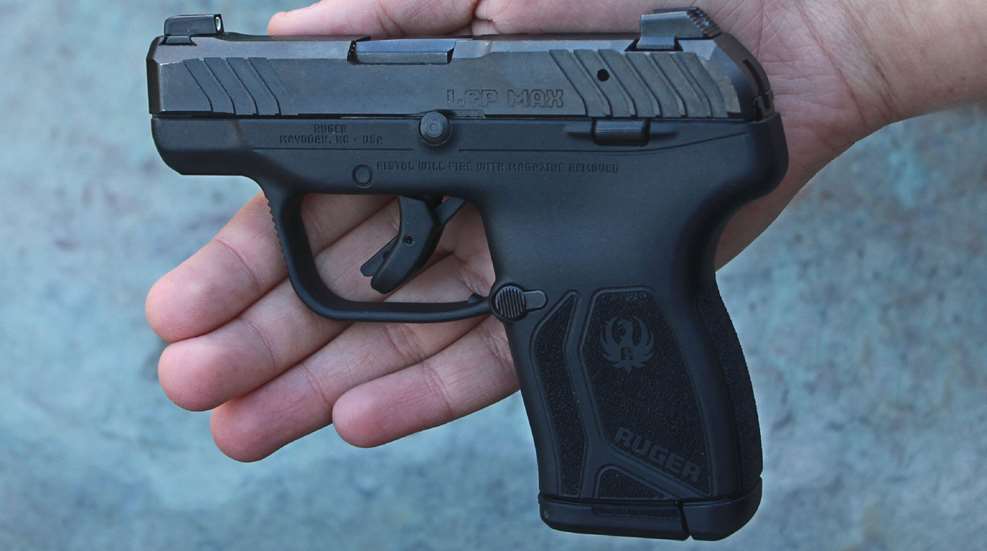
All handguns are an exercise in compromise, but pocket pistols more so than most. Historically speaking, to make semi-automatic pistols small enough to be stowed in pants, jacket and even vest pockets, required a good deal of sacrifice in regards to features, ammunition capacity and cartridge size. But over the last two decades we’ve seen pocket pistols evolve right alongside their larger concealed-carry compatriots.

The LCP Max ships with a soft pocket holster, a magazine loader, one 10-round magazine with a flush-fit base plate installed and a finger rest extension base plate.
In 2008, Ruger played a significant role in launching a .380 ACP pocket pistol trend that would last for over a decade. The success of the LCP, short for Light Carry Pistol, inspired several companies to launch their own slim, small daily carry pistols. Because of this, it seems appropriate that Ruger would be the company to find a way to keep pocket .380s relevant in a marketplace currently dominated by “Micro Nine” double-stack 9 mm pistols. The LCP Max blends all that Ruger has learned from more than a decade of production into the best version of this platform yet. Here are five ways this little semi-automatic “fixes” common pocket pistol problems and keeps this type of carry gun a competitive option.
Defensive Performance
Prior to the late 2000s mass migration to pocket .380s, many pistols in this size class were chambered in smaller cartridges including .22 LR, .25 ACP and .32 ACP. The move to .380 ACP was definitely a step up in performance. But at that time, the .380 ACP was still considered by many gun gurus to be not quite enough for personal defense.

Modern defensive hollow points designed specifically for smaller .380 ACP pistols improve the platform’s performance.
In the years since then, ammunition manufacturers worked to meet the demand for better defense-grade loads in this caliber. When stoked with up-to-date hollow points, this gun and ammunition combination offers a solid level of performance, especially for pistols this small. Recoil is also more manageable when compared to similarly sized semi-autos chambered in 9 mm. Here's a summary of how the LCP Max performed at the shooting range using ammunition made by Black Hills, Browning and Federal Premium ammunition:

Double-Stack Ammunition Capacity
One of the primary shortcomings of pocket pistols is ammunition capacity. The original Ruger LCP (2008) and the improved LCP II (2013), both use single-stack magazines that include a flush-fit 6-round magazine or an extended 7-round magazine.

This 10-round double stack magazine narrows at the top to preserve the pistol’s slim profile.
The most notable change to the LCP Max is a redesign of the magazine and the grip frame. The tricky bit was making sure that the gun did not thicken up too much in the process of making room for more ammunition. The LCP Max keeps the original slide width of just 0.81". The Max utilizes a double-stack magazine which narrows down to a one-round width at the top which is why slide maintains its narrow profile. It increases the ammunition capacity to 10+1-rounds with flush-fit magazines. The extended magazine almost doubles the round counts of the original with 12+1-rounds. That's a significant increase. (The grip of the LCP Max, right, is only slightly longer and wider than that of the LCP II single-stack pistol, left.)

The grip width does increase, but not much. The single-stack grip is 0.90" wide at the back strap and narrows a bit at the front strap. The Max grip is a consistent width of 0.92" from front to back. The grip actually fills the shooting hand better without making the pistol unnecessarily chubby. In fact, the LCP Max fits most holsters made for the LCP II.
Light, Smooth Trigger Pull
Another less desirable feature of some pocket pistol designs is a heavy or rough trigger. Some have heavy trigger pulls by design as a safety feature. The original LCP sported a 10-lb. double-action trigger, which was unpleasant to use. When the company launched the updated LCP II, the double-action trigger was replaced with a much lighter single-action trigger with an integral safety lever. The Max keeps this smooth single-action trigger and safety which brings the pull down to around 5.5 to 6 lbs. This model also incorporates a slide which locks open when the last shot is fired.
Still Pocket Sized
The LCP Max brings the pocket pistol's capacity up in line with many of the now popular “Micro Nine” double-stacks that accept 10- to 13-round magazines. But as compact as the Micro Nines might be, they are still not pocket pistols. Don't get me wrong, these 9 mms are exceptionally small for the cartridge they fire and they carry quite comfortably in a belt holster. But they are just not quite small enough, or light enough, to ride inside a pants pocket or some smaller off-the-body carry bags.

The Taurus GX4 (right) is small for a 9 mm pistol but it’s quite small enough for pocket carry like the LCP Max (left).
A good example of a smaller size Micro Nine is the Taurus GX4. It's 6.05” long, 4.25" tall, 1" wide and weighs in at 18.5 oz. with an empty 11-round magazine. The LCP Max is 5.17" long, 4.12" tall, .92" wide and tips the scales at 10.8 oz. with an unloaded 10-round magazine. Although these differences in shape and weight may not sound like much on paper, the differences are quite noticeable when holding the pistols side by side. If you need small, the LCP is a better fit. And with its greater capacity and other features, it's one of the most well-balanced pocketable pistols available.
A Useful Sight System
I've been fascinated with pocket pistols for much of my shooting career. My interest in this niche of defensive handgun is most likely rooted in my admiration for the Belgian-made Baby Browning pistol my dad purchased in the late 1960s. As a result, I've evaluated several models from a variety of manufacturers, including the Baby Browning itself.

The nubbin-sized fixed front sight of the KelTec P32 (left) compared to the slightly larger serrated sight of the LCP II (center) and the large, easy to see white outline dovetailed night sight of the LCP MAX (right).
The one feature that I've found many pocket pistols share in common is less than useful sights. The sights they sport can often be described with words like diminutive, decorative or non-existent. I believe this to be a vestige of 19th and 20th century designs, and defensive philosophy, which has managed to stick around for a few reasons. Fixed sights are less expensive to manufacture due to fewer steps and materials which keeps the cost down. Since the gun is small, the sights should be sized to match, right? And last, but not least, since pocket pistols have been considered “belly guns” or “get-off-me-guns” the defensive philosophy is that they will only be used at bad breath to arms length defensive distances, so why bother with gussied up sights?
Ruger recognized that this version of the LCP Max has the performance potential to be useful at longer distances with an upgrade to the sight system. The pistol arrives with a dove-tailed white outline Tritium night sight in front and a drift adjustable serrated U-notch rear sight. The curved rear notch cups the front sight dot in a way that makes it easy to form a sight picture quickly even in low light situations.

The rear sight of the KelTec P32 (left) is small and set into the slide. The LCP II’s rear sight (center) is larger and serrated. The dovetailed U-notch rear sight of the LCP MAX (right) is similar to those found on full-sized pistols.
These sights don't turn the LCP into a target pistol but they do comfortably aid in extending the practical defensive distances from arm's length to 15 yards and beyond. They increase the cost of the pistol, bit it’s worth it. This model arrives with a soft pocket holster that protects the sights, covers the trigger and greatly reduces lint and pocket dirt build-up in the gun's action.
So is the Ruger LCP Max the “perfect” pocket pistol? I dislike making such claims simply because every time I think a particular shooting category has reached its pinnacle, artful gun makers come up with something new that shakes things up. But as of this writing, the LCP Max offers the best balance of size, capacity and features of the pocket pistols currently available. For more information, visit ruger.com.








